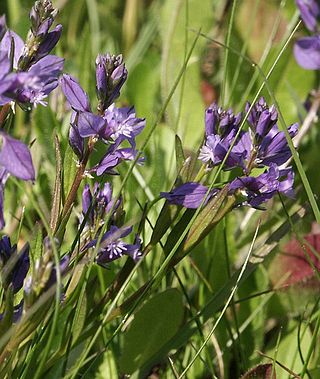
Polygala is a large genus of flowering plants belonging to the family Polygalaceae. They are commonly known as milkworts or snakeroots. The genus is distributed widely throughout much of the world in temperate zones and the tropics. The genus name Polygala comes from the ancient Greek "much milk", as the plant was thought to increase milk yields in cattle.
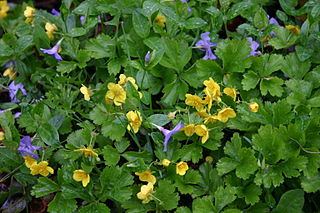
Waldsteinia fragarioides (syn. Dalibarda fragarioides Michx. and Geum fragarioides, also called Appalachian barren strawberry, or just barren strawberry, is a low, spreading plant with showy yellow flowers that appear in early spring. This plant is often used as an underplanting in perennial gardens.

Rhododendron catawbiense, with common names Catawba rosebay, Catawba rhododendron, mountain rosebay, purple ivy, purple laurel, purple rhododendron, red laurel, rosebay, rosebay laurel, is a species of Rhododendron native to the eastern United States, growing mainly in the southern Appalachian Mountains from West Virginia south to northern Alabama.

Rhododendron maximum is a species of Rhododendron native to the Appalachians of eastern North America, from Alabama north to coastal Nova Scotia. Its common names include great laurel, great rhododendron, rosebay rhododendron, American rhododendron and big rhododendron.

Rhinotropis californica, synonym Polygala californica, is a species of flowering plant in the milkwort family known by the common name California milkwort. It is native to southwestern Oregon and northern and central California, where it grows in the coastal mountain ranges in local habitat types such as chaparral and forest. It is a perennial herb producing spreading stems, generally decumbent in form, up to about 35 centimeters in maximum length, lined with narrow oval leaves each a few centimeter long. The upper inflorescences produce several open flowers, and there may be some closed, cleistogamous flowers lower on the plant. The open flowers have pink or white winglike lateral sepals with hairy edges. The petals are similar in color, the central one tipped with a white or yellow beak. The fruit is a flattened green capsule up to a centimeter long containing hairy seeds.
Rhinotropis heterorhyncha, synonym Polygala heterorhyncha, is a species of flowering plant in the milkwort family known by the common names beaked spiny polygala and notch-beaked milkwort. It is native to southern Nevada and it is known from a few occurrences just over the border in the Funeral Mountains of California above Death Valley. It is a resident of desert scrub habitat. This desert plant is a perennial herb or small shrub growing in small clumpy mats. The thin, branching, thorny-tipped stems are somewhat waxy in texture and sometimes slightly hairy. They are lined sparsely with small oval, dull-pointed leaves. The inflorescence bears a few flowers, each with a winglike pair of bright pink sepals and a yellow-tipped central petal. The fruit is a vein-streaked capsule.

Prosartes, the fairybells, is a North American genus of flowering plants in the lily family.

Tolpis barbata is a species of flowering plant in the family Asteraceae known by the common name European umbrella milkwort. It is native to southern Europe, including the Mediterranean, namely in Portugal, Spain, Morocco, Algeria, Tunisia and the British territory of Gibraltar and it is known in many other places as an introduced species and a common weed, such as in California and New South Wales.
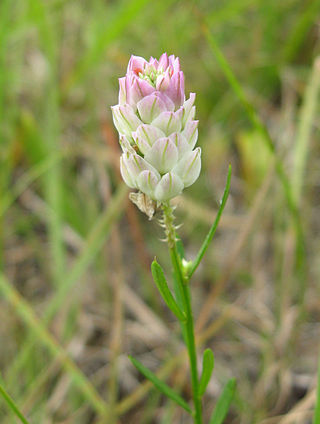
Senega sanguinea, commonly known as purple milkwort, field milkwort, or blood milkwort is an annual species of plant in the milkwort family (Polygalaceae). It is native to central and eastern North America.

Polygala myrtifolia, the myrtle-leaf milkwort, is an evergreen 2–4 m tall South African shrub or small tree found along the southern and south-eastern coasts, from near Clanwilliam in the Western Cape to KwaZulu-Natal. It is a fast-growing pioneer plant, a typical fynbos component, and may be found on dunes, rocky places, along forest margins, beside streams, and in open grassland. It belongs to the milkwort family of Polygalaceae.

Senega cruciata, commonly called drumheads milkwort, is a species of flowering plant in the milkwort family. It is native to eastern North America, where it is found in scattered localities, particularly around the Coastal Plain, the Great Lakes, and the southern Appalachian Mountains. It is found most often in wet, sandy prairies and marshes.

Hebecarpa macradenia, synonym Polygala macradenia, the glandleaf milkwort, is a subshrub in the milkwort family (Polygalaceae) found in the Arizona Uplands of the Sonoran Desert. Its "odd" flowers are said to be "spectacularly beautiful" when viewed with a hand lens.

Senega lutea, commonly known as orange- or yellow milkwort, is a plant in the milkwort family (Polygalaceae) native to pine-barren depressions and swamps in coastal areas of the southern and eastern the United States. It was first described in 1753 by Carl Linnaeus.
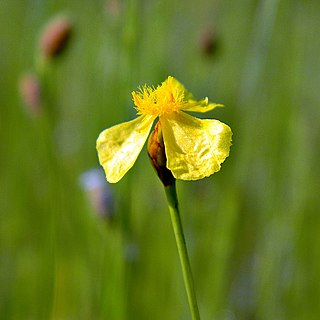
Xyris difformis, the bog yelloweyed grass, is a North American species of flowering plant in the yellow-eyed-grass family. It is native to the eastern and southern United States, eastern and central Canada, and Central America.

Senega alba, commonly called white milkwort, is a species of flowering plant in the milkwort family (Polygalaceae).
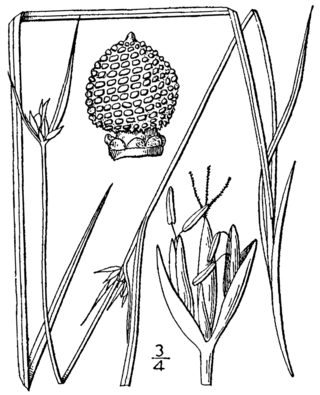
Scleria pauciflora, known as few-flowered nutrush, papillose nut-sedge, and Carolina-whipgrass, is a plant in the sedge family (Cyperaceae) native to northern Mexico, the eastern United States, southern Canada, and Cuba. It is common across a broad stretch of the southeastern United States in many different habitat types, becoming rare at the northern end of its distribution.
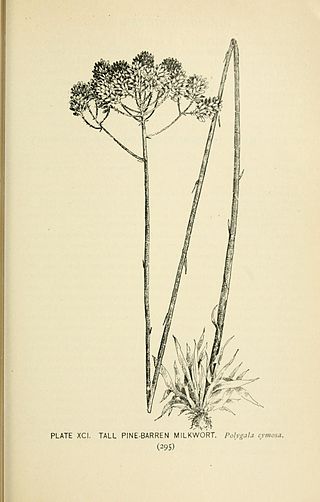
Polygala cymosa, the tall pinebarren milkwort, is a species of flowering plant in the family Polygalaceae. It is endemic to the United States.
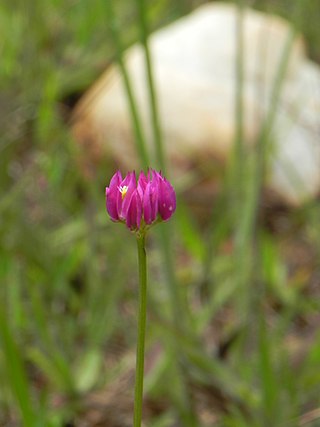
Polygala longicaulis, the longstem milkwort, is a species of flowering plant in the milkwort family (Polygalaceae). It is an annual dicot that is native to the Americas.
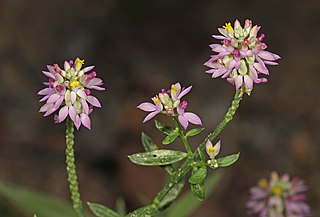
Polygala mariana, the Maryland milkwort, is a species of flowering plant in the milkwort family (Polygalaceae). It is endemic to the southern and eastern United States. It is an annual with a height between 4 and 16 inches and it flowers between June and October.

Polygala ramosa is a species of flowering plant in the milkwort family (Polygalaceae). It is endemic to the coastal areas of the Southern and Eastern United States. It is an annual herb with a height of 10 to 40 centimetres that produces yellow flowers between the months of May and September.



















